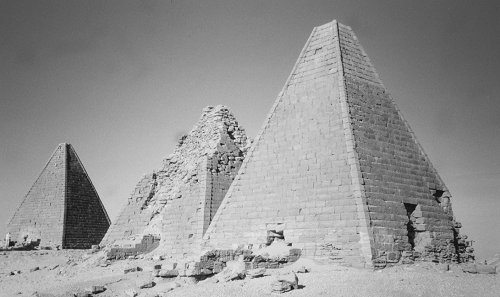Sudan, A Country Study
Historical Background
Since antiquity, Sudan’s history has centered around a succession of states along the northern Nile and around cultural, military, and political relations with the Egyptians to the north. The ancient Egyptians at times controlled the northern Sudanese lands of Nubia and Cush and fostered an Egyptianized population that ruled Egypt in the early first millennium B.C. A few centuries later, the commercial state of Meroë dominated the central Nile. In the mid-fourth century A.D., Meroë succumbed to invasion and was succeeded by three states with cultural ties with Egypt, including Orthodox Christianity.
During the fourteenth century, Islam was introduced from Egypt. Together with migrations from the north, Islam gradually changed the nature of Sudanese society. Islam facilitated the division of the country into northern and southern halves, one Arab and Muslim, the other Afri can and animist, a division that persists today. The Funj kingdom centered at Sinnar on the Blue Nile and the sultanate of Darfur in the west flourished in and after the sixteenth century. In the early nineteenth century, the Egyptians once more asserted control over much of Sudan. They divided the country into provinces and brought the Southern peoples into their administrative system based at Khartoum. Slavery and the slave trade intensified during the nineteenth century and instilled in Southerners fear and hatred of the Northern Arabs. In the early 1880s, an Islamic cleric declared himself the long-awaited Mahdi. He led his followers, the Ansar, in a revolt that drove out the Egyptians and their Ottoman Turk and British overlords and established his dominion over much of northern and central Sudan.
This Mahdist state lasted until 1898, when the Egyptians and British returned, defeated the Ansar, and established a joint administration, the Anglo-Egyptian Condominium, which made Sudan in effect a British colony. British colonial officials fostered a system of administration from the central Nile region which entailed the neglect of peripheral areas and separated the Southern provinces of Upper Nile, Equatoria, and Bahr al-Ghazal from the North. The latter were largely left to their own devices, economic and political development is concentrated along the central Nile.
Sudan gained its independence from Britain in 1956. Since then, it has alternated between civilian and military government, the latest of which is the present regime of Umar Hassan Ahmad al-Bashir.
To learn more, kindly download the file below.
